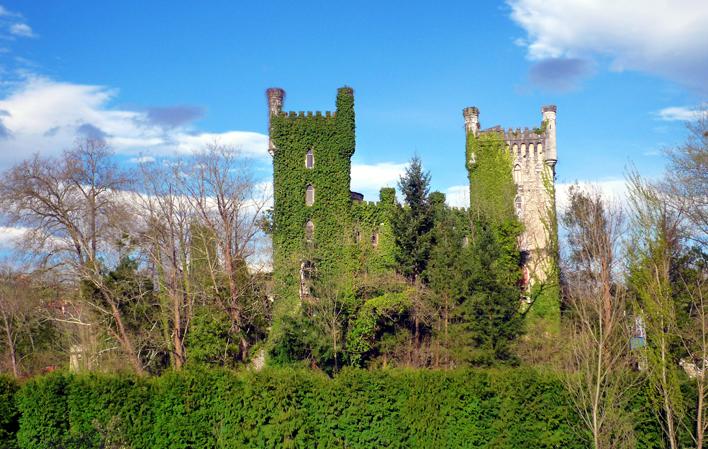
Olloniego to the Lluera Cave
- Address Oviedo Asturias Centre
- Distance Distance: 39,4 kms
- Difficulty Difficulty: Short
- Altitude Altitude: 350 (maximum)
- Mountain bike Mountain bike: 1 day
- Start point Start point: Oviedo
- Route type Route type: mtb
- Tour type Tour type: Circular
- Layout of the route Layout of the route: Download kml
Route
Oviedo - Oviedo 39,25
This cycle touring tour is circular and suitable for all types of bicycles. It runs through an urban environment, green paths and local roads with little traffic.
It starts at the Llamaquique train station in Oviedo through an urban environment until it reaches the Parque de Invierno. Cycle along the Fuso de la Reina path until you reach the La Manjoya turnoff, where you leave the path. Bordering part of La Zoreda Forest, where there is a beautiful castle that has now been converted into a hotel, you should head towards the village of Picuyanza. At the foot of the mountain of the same name there is a crossroads where you must take the direction of another village, La Manzaneda.
The descent begins and about halfway down is the monument to the cyclist Alessio Galletti. Continue down this steep road (beware that the bike gets stuck on that 14%!) until you reach the village of Olloniego.
At this point it is interesting to make a stop and see the Historic Site of Olloniego, consisting of the chapel of San Pelayo de Olloniego (located in the town's cemetery); the so-called old bridge or "la puente vieya", of medieval origin, initially made up of five arches and which currently has only three, built in the 14th century to cross the river Olloniego. It was built in the 14th century to cross the Nalón river, although in 1676 its course was altered due to a flood of the river and it currently runs along a different course; and the tower of Muñiz and the palace of Bernaldo Quirós. The tower was first built in the 14th century, in a circular shape and of a defensive nature to control the payment of the so-called tithe which, at the old bridge, had to be paid to the Church to allow trade between the plateau and Oviedo. Later, in the 16th century, the palace was built.
From Olloniego there is another path which you will enjoy cycling along the banks of the river Nalón. It is marvellous to see the longest river in Asturias when it flows down with abundant water.
When you leave the path, the route takes you to the top of Las Segadas, from where it descends to Bueño. If you have time to spare, you can recharge your batteries in this pretty village full of hórreos (raised granaries) and paneras.
From Bueño you must go to Palomar, where a small but manageable slope begins, reaching the village of Puerto. Practically downhill you reach the entrance to Caces and shortly after to Las Caldas, a spa town par excellence and where you can't miss taking a photo of the castle of Las Caldas.
Once you have seen the castle, continue on to La Lluera Cave, which is barely two kilometres from Las Caldas. The visit to the cave is guided, lasts approximately 45 minutes and requires prior booking, www.artepaleoliticoenasturias.com.
La Lluera Cave is located in the municipality of San Juan de Priorio. These prehistoric caves, declared an Asset of Cultural Interest, are located on the course of the river Nalón. Experts consider La Lluera to be the most complete outdoor sanctuary of Palaeolithic art in Europe. Its extraordinary importance is due both to the scarcity of this type of sanctuary, most of which are indoors, and to the magnificent collection of engravings from the Solutrean period that its two hollows contain.
On the guided tour, and after seeing the cave, you can visit the church of San Juan de Priorio (12th-13th c.), one of the most important constructions of Asturian Romanesque architecture.
We return to Las Caldas to link up with the Oviedo-Fuso path, on which the excursion started at the beginning of the day. Cycling back to Oviedo, the end of the route.
Map
Itinerary
Oviedo-La Manjoya-Picuyanza-Manzaneda-Olloniego-Las Segadas-Bueño-Caces-Las Caldas-Cueva La Lluera-San Juan de Priorio-Oviedo



